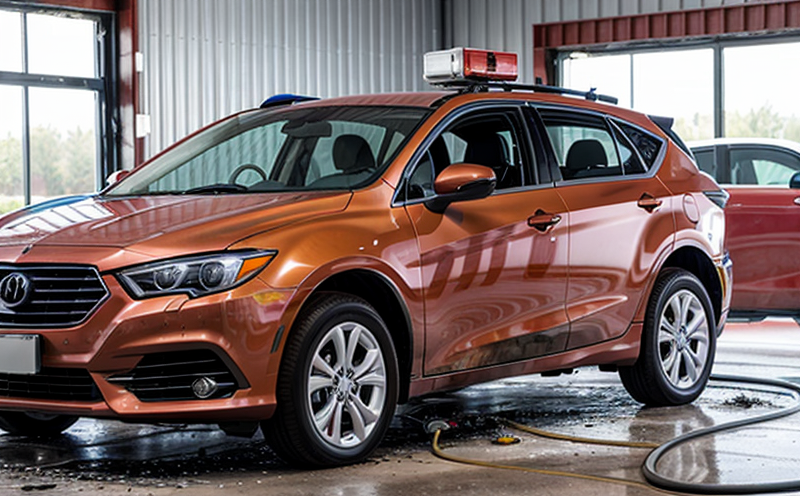Fire Resistance Testing of Automotive Upholstery
The fire resistance testing of automotive upholstery is a critical component in ensuring passenger safety and compliance with international standards. This service ensures that the materials used within vehicles meet the necessary requirements for heat, flame, smoke, and toxic gas resistance under specified conditions.
Automotive upholstery plays a pivotal role in vehicle interiors, providing comfort, style, and functionality. However, it is also one of the primary sources of potential fire hazards due to its composition. This service focuses on evaluating how well the materials used in automotive upholstery can withstand exposure to heat and flames without igniting easily or spreading rapidly.
The testing process involves exposing samples of the upholstery material to controlled conditions that simulate real-world scenarios, such as those found during a vehicle fire event. These tests are designed to mimic the types of situations where upholstery might be exposed to intense heat or open flame for extended periods.
During these tests, various parameters are monitored and recorded, including the time it takes for ignition to occur, the duration of burning, the maximum temperature reached during combustion, and the amount of smoke produced. Additionally, toxic gas emissions are measured to assess their potential impact on human health.
The results of these tests provide valuable information about the flammability characteristics of different types of automotive upholstery materials. This data is used by manufacturers to select safer materials for use in vehicles, thereby enhancing overall passenger safety during accidents or fires.
It's important to note that fire resistance testing goes beyond just assessing the immediate risk posed by flames; it also considers long-term durability and performance under extreme conditions. By conducting rigorous testing, we can identify any weaknesses early on in the product development cycle, allowing for necessary modifications before mass production begins.
The importance of this service cannot be overstated given recent trends towards more advanced vehicle designs that incorporate lightweight materials with improved fuel efficiency but potentially higher risks if not properly managed. Ensuring proper fire resistance compliance helps mitigate these risks while maintaining high standards of quality and safety across all segments of the automotive industry.
| Aspect | Description |
|---|---|
| Test Conditions | The test is conducted using a controlled environment where specimens are exposed to specified temperatures and durations. |
| Specimen Preparation | The upholstery samples are prepared according to ISO 16950-2:2017, ensuring uniformity across all test runs. |
| Instrumentation | The testing is performed using specialized equipment that accurately measures key performance indicators like burn time and heat release rate. |
Scope and Methodology
The scope of fire resistance testing for automotive upholstery encompasses several critical areas aimed at ensuring material safety and performance. This includes evaluating not only immediate flammability but also long-term durability under severe thermal stresses.
| Aspect | Description |
|---|---|
| Data Analysis | The collected data is analyzed statistically to determine trends and identify potential areas for improvement. |
| Report Generation | A comprehensive report summarizing the findings of each test run, including recommendations for material selection or modification where necessary. |
The methodology employed in conducting these tests follows established international standards such as ISO 16950-2:2017. These guidelines provide clear instructions on how to prepare specimens, set up the testing environment, and interpret results accurately.
International Acceptance and Recognition
- ISO 16950-2:2017 – This standard provides detailed procedures for determining the resistance of automotive interiors to fire exposure.
- ASTM E84-20 Standard Test Method for Surface Burning Characteristics of Building Materials, which offers additional insights into flame spread and smoke development.





